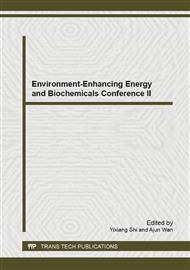p.77
p.85
p.93
p.103
p.111
p.123
p.131
p.143
p.151
Preparation and Properties of Thermo-Sensitive Resin for Processless CTP Plate
Abstract:
Computer-to-Plate (CTP) technology has been becoming an important topic of research and application during the era of digital printing. Processless CTP plate is regarded as a leading candidate for CTP plate due to its many merits such as friendly to environment, saving resources, good quality of imaging, low cost and so on. A new thermo-sensitive resin which could be used in processless CTP plate was synthesized by solution polymerization with styrene and N, N-dimethylaminoethyl methacrylate in 1:1 molar ratio using azodiisobutyronitrile (AIBN) as initiator and 1,4-dioxane as solvent and then by hydrogen peroxide (H2O2) oxidation of the tertiary amine groups of the copolymer. It could be found from thermogravimetric analysis that there was a slight weight loss before 120°C owing to water evaporation; and there was an obvious weight loss from 140°C to 230°C owing to the decomposition of amine oxide group; and there was a large weight loss after 300°C owing to the decomposition of thermo-sensitive resin. It was found from contact angle analysis that the contact angle of the thermo-sensitive resin film reached maximum 75° after baking for 7 min at 140°C, which means that the decomposition rate of amine oxide group is slow and parts of amine oxide groups decompose incompletely. The contact angle of the thermo-sensitive resin film reached maximum 80° after baking for 5 min at 160°C or 2 min at 180°C which means that thermal decomposition rate increases with the increase of temperature and the decomposition occurs completely. It was also found that the resin film could be easily washed away from the substrate with neutral water before heat-treatment, but it could no longer be removed after the heat-treatment of baking for 5 min at 140°C or baking for 2 min at 160°C or baking for 1 min at 180°C. This new thermo-sensitive resin could be used in chemical-free thermal laser imaging application.
Info:
Periodical:
Pages:
123-129
Citation:
Online since:
February 2013
Authors:
Price:
Сopyright:
© 2013 Trans Tech Publications Ltd. All Rights Reserved
Share:
Citation:


